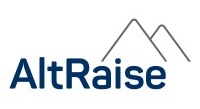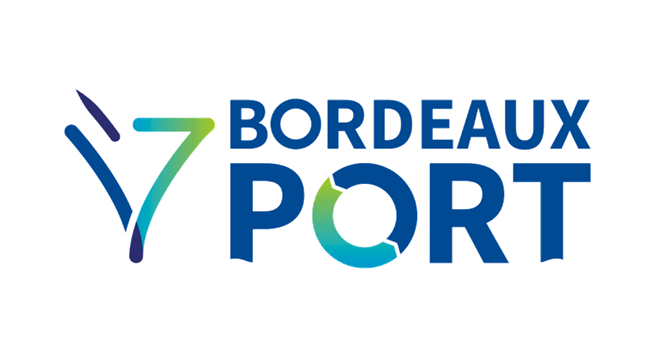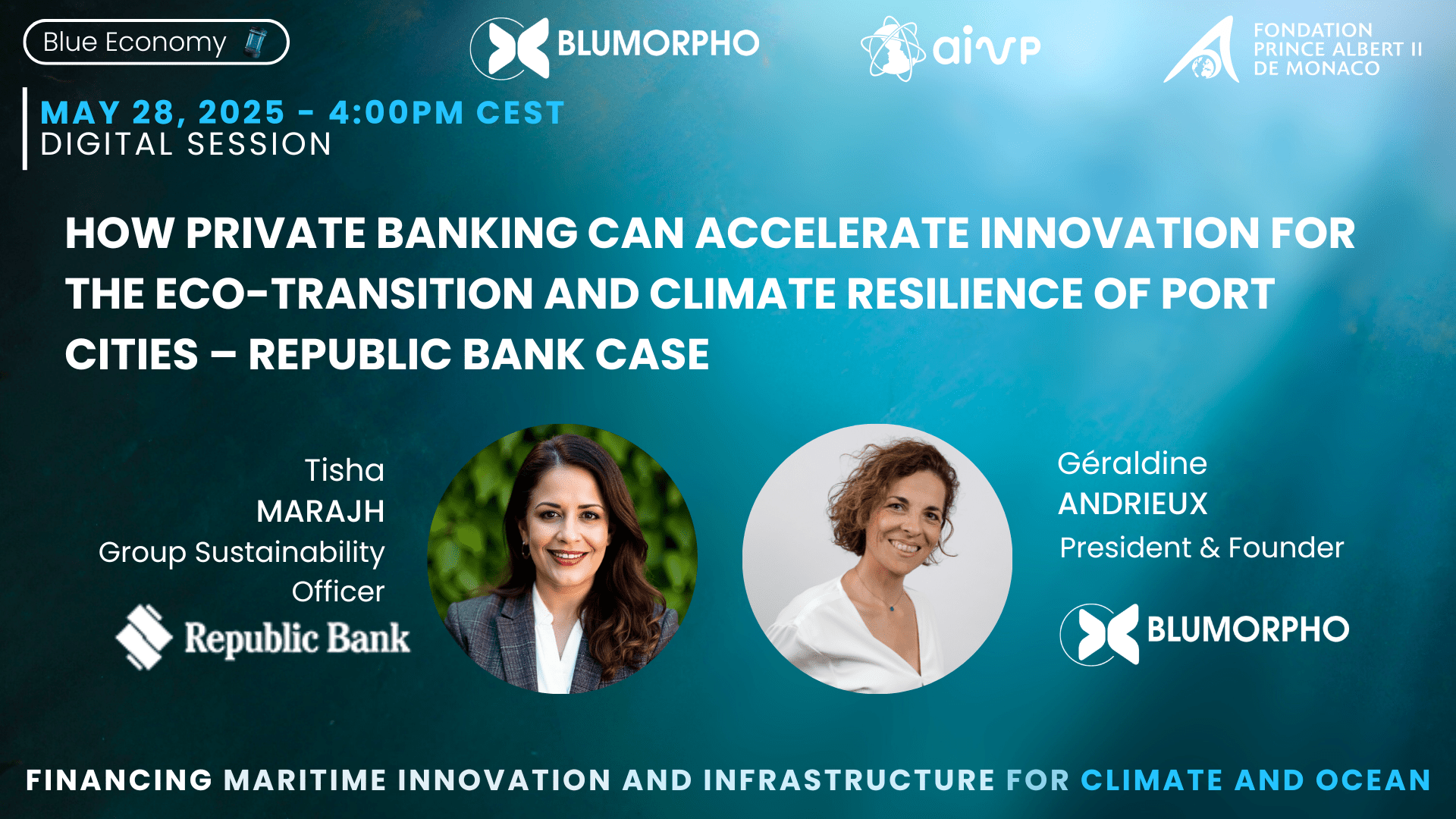Welcome & Introduction: Creating the Right Ecosystem for Innovation
GÉRALDINE:
Hello everybody, and welcome back to our digital session on financing maritime innovation and infrastructure for climate and ocean sustainability.
We have a very interesting session today, as usual for those of you who have been participating over the past few weeks.
At BLUMORPHO, we value interactivity, so we encourage you to ask your questions. You’ll find the question box on the right side of your screen, don’t hesitate to use it at any time, including during Tisha’s talk. It won’t be a formal presentation, but rather a discussion, and of course, you can also contribute afterward.
If you experience any technical issues or can’t hear properly, feel free to use the chat as well. We’ll address any problems as they come up, but it’s very important for us to maintain this interaction with you.
I’m very happy and honored to welcome Tisha Marajh, Group Sustainability Officer at Republic Bank. Hello Tisha.
Today, we’re going to address a major topic: how private banking can accelerate innovation for the ecological transition and climate resilience of port cities. We’re very interested in hearing from you, Tisha, about the Republic Bank case, how you’re approaching this, and why supporting the evolution of port cities is a priority for you.
It’s a key topic. As you know, many port cities are highly engaged. We’ve selected a few to join us in Monaco to share their experiences and needs. During our sessions in Monaco, we’ll work together to refine and define what relevant financial tools can support this transition.
At BLUMORPHO, we’ve been operating for 10 years with the mission of creating the right conditions for innovation adoption. When we speak about innovation, we’re not only talking about technology, it’s also about markets, financing, and ecosystems. Without fertile, high-value ecosystems, it becomes more challenging for entrepreneurs and for everyone involved.
We’re particularly active in urban-port ecosystems, which are fascinating. They bring together innovation and strong markets, but also face major decarbonization challenges. And where there are challenges, there are opportunities, that’s why we’re here today.
We’re also very happy to collaborate with AIVP, which brings together more than 200 members and has been active for 35 years. This gives them strong expertise in port city ecosystems, and we’re pleased to work alongside them.
We also have the great pleasure of collaborating with the Prince Albert II of Monaco Foundation, which is deeply committed to ocean protection and ecosystem support. They are also very engaged with entrepreneurs through their ReOcean Fund, which will join us in Monaco on the 6th.
Thank you again, Tisha, for being such a strong partner in this initiative. It’s important for us to amplify the Caribbean voice through Republic Bank, as you bring deep insight into the challenges of decarbonization.
To sum up what we’re doing here: we’re focusing on innovation and financing, with decarbonizing the maritime industry as a central challenge. This is a massive market and a global issue. If we’re honest, no one fully knows yet how to achieve it. It’s one of the biggest challenges we face.
Through our studies and discussions with shipowners and various organizations, we realized that port cities are real orchestrators. Their ecosystems have the potential to create strong impact and drive us toward net-zero goals.
We believe there are significant opportunities to develop new financial solutions by working with committed partners like Tisha and Republic Bank. The right combination of technological innovation and financial mechanisms will be key.
That’s what we’re already building—this co-construction journey—by bringing together the needs of port cities, the solutions offered by innovators, and the different financial and ecosystem mechanisms to enable access to proper financial support.
This is the spirit of our initiative. For those who’ve already joined us before, we’re also looking forward to continuing the work in Monaco on the 6th to move this forward efficiently.
I’ve spoken long enough, Tisha, this is all about you today. So let’s begin.
Can you tell us what it means to be Group Sustainability Officer at Republic Bank?
TISHA:
Thank you so much, Géraldine, for that introduction. Good morning from Trinidad, it’s still morning here in the Caribbean, though I know it’s afternoon or evening for many of you. Thank you for having us in this session, and a special thank you to the other partners as well: AIVP and the Foundation.
To respond to your question and provide some context: this is a new area of focus for our bank. As you know from our earlier discussions, we are primarily a Caribbean-based bank, with growing exposure in Africa and South America. So this topic is somewhat new territory for us, but I’ll do my best to represent our work and perspective.
A quick overview of Republic Bank: we are about 188 years old. The bank originally operated as a colonial institution, when Trinidad and Tobago was under European rule, first British, then French, Spanish, and Portuguese. Eventually, we were acquired by what became Barclays Bank, before evolving into the fully Caribbean-owned Republic Bank that exists today.
We currently operate in 16 countries, spanning South America, the Caribbean, and, increasingly, Africa. Our services cover the full spectrum of financial offerings, commercial and retail banking, investment services, insurance, and wealth management.
We’re also on a strong trajectory toward transformation, focusing on digitalization and sustainability.
As Group Sustainability Officer, I support the bank’s efforts across all 16 countries to fulfill our sustainability commitments. To give you a sense of our approach: we are members of the United Nations Environment Programme Finance Initiative and have adopted the Principles for Responsible Banking.
We’re also founding members of the Net-Zero Banking Alliance, so achieving net zero is a strategic imperative for us.
My role includes mainstreaming the Sustainable Development Goals (SDGs) throughout our operations, including charitable and corporate giving activities. I also lead efforts related to diversity and inclusion across the organization.
A core part of our work is sustainable finance, which we’ll be discussing today. We’re also paying close attention to sustainable agriculture and the support of small, medium, and micro enterprises.
All of this is part of a journey that only really began about three or four years ago, when I started in this role. It’s a large and evolving portfolio, and our aim is to make it coherent and impactful for the diverse regions in which we operate.
GÉRALDINE:
As you mentioned, you’re operating across several countries, which means navigating different regulatory frameworks. How many countries does the bank currently cover?
TISHA:
We’re in 16 countries.
GERALDINE:
Yes, it’s a significant point, and also a very interesting one, because developing new financial tools allows us to adopt a global perspective. It can also help us navigate, or even overcome, local regulatory constraints, which remain a major challenge
Could you share with us why Republic Bank is so deeply engaged to support ocean protection, the decarbonization of the maritime industry and climate resilience ?
TISHA:
Absolutely. That’s indeed a major focus for us right now. While many of the regulations in our operating regions are still voluntary, we’re seeing rapid changesparticularly in Africa, with developments in Ghana, and in the Cayman Islands, where we own Cayman National Bank. The same applies to the Eastern Caribbean. So we’re definitely seeing increasing regulatory pressure across our footprint.
Regarding the bank’s size, for those less familiar with Republic Bank, we are considered a large bank by Caribbean standards. We manage over TT$100 billion in assets, which translates to approximately US$20, 25 billion. We’re on a strong growth trajectory and actively pursuing expansion into new countries.
Much of this growth is linked to our presence in countries that have recently discovered oil, such as Guyana, Suriname, Ghana, and Trinidad and Tobago. The emergence of these new energy economies has been a key driver for our development, and it’s pushing us to scale quickly.
This brings me to the next point. As mentioned, this is still a relatively new journey for the bank. But we are fully committed to ocean protection, maritime decarbonisation, and climate resilience. These issues are deeply relevant to us, and I’d like to explain why.
Republic Bank operates primarily in small island states, nations that are surrounded by water and often reliant on a single economic sector. That might be energy, as in the countries I just mentioned, or tourism, which is the main driver for most of the others. Moreover, these countries are located in an active hurricane belt. So from the very beginning, we’ve been acutely aware of our vulnerability and the need to protect the ocean; it’s truly a matter of survival.
Most of our capital cities are also port cities, a legacy of colonial trade routes based on exports of sugarcane, cocoa, coffee, and eventually oil and gas. There are around 30 to 35 historical port cities in the Caribbean, and they’ve become central hubs for economic activity, commerce, and industry. However, this development hasn’t always been well planned. Many of these ports grew in a fragmented, ad hoc way, pieces were added as needed without a long-term vision.
Today, that lack of planning is a major issue. Climate change and rising sea levels are putting enormous strain on infrastructure. We’re constantly having to repair rather than invest in resilient solutions from the outset. On top of that, we’re dealing with rising energy costs and increasing demand for imports and exports,particularly food, as we’re heavily reliant on external supply chains.
Cruise tourism is another pressure point. To meet growing demand from cruise passengers, ports have often been developed in unsustainable ways, prioritizing volume over long-term resilience.
That’s why Republic Bank is so engaged in this conversation. We understand that the future lies not just in developing new port infrastructure, but in reimagining existing ports to be sustainable and climate-resilient. The Caribbean is not a net contributor to global emissions, yet we bear the brunt of climate change’s effects. We’ve seen the damage caused by hurricanes, entire cities devastated in a single season, customers unable to repay loans, and entire economies set back.
This exposure has led us to embed climate resilience and decarbonisation directly into our lending strategies. We view the blue economy as a powerful driver for change, one that holds untapped investment potential across the region. And that’s why we’re positioning ourselves as active players in this space.
GÉRALDINE:
That’s very interesting, and I’m sure many people hearing you will be very happy to know that this is really part of your strategy.
And as you mentioned, this is not at all about bluewashing or greenwashing.
It’s really related to the economy of the different countries where you are very active.
So you also have this kind of ecosystem approach, which I think is exactly what we need when we take a step back. We will come back later to climate resilience and the kinds of solutions that will be important for you to consider — that’s something I’m happy to discuss with you as well.
It’s also interesting because you mentioned tourism, and it’s true that when we look at the maritime industry, most of the time we focus on shipping since it represents a large part of carbon emissions and the need for decarbonization.
Tourism is also a significant part of the GDP for many countries.
So it’s very interesting to also consider cruise companies, as well as leisure boats and smaller vessels that can locally contribute to emission reductions.
We can come back to this later and allow our participants to ask you questions. And my next question will be :
What kinds of projects would be interesting for you, and what key factors do you consider important when evaluating them?
GÉRALDINE:
You’re going to meet in Monaco with different port cities, they have different objectives, different projects actually, so I think it’s very important to understand what is important for you and what you’re looking for.
TISHA:
Well, I mean, like I said, because we operate in different countries, what is important for us in Trinidad may not be the same in Barbados, right?
But I think, as a group, Republic Financial Holdings Group, there are specific areas that are of interest to us.
Port development is a significant one.
As I was having this discussion and doing more research, I reached out to some people I know in the major ports in Trinidad, for example, where the focus is primarily on energy.
Trinidad is a heavily industrialized country, so for Trinidad, energy and sustaining ports that focus on energy exports, and the value chain in and out of that system, is critically important for us.
So we are looking at port development.
We’re also looking at projects.
We have several financing targets as a bank in sustainability.
We have a USD 200 million financing target for climate-focused projects throughout the island, which focus on climate-related adaptation and resiliency, because that is what we’re focusing on in the region anyway.
We’ve had uptake on financing and arranging projects involving wind and solar farms and similar initiatives.
We’ve had some investments in greening specific port systems and studies, and we’re looking at investing in medium-sized shipping focused on alternative energy.
We have a target to use concessionary finance to encourage those types of projects.
We also have a USD 100 million financing target, again using a similar concessionary finance model, for sustainable agriculture.
Although the Caribbean might seem like it should be strong in agriculture, we are not, we import a lot of our food, which is part of why our port cities and shipping are so important.
We are also looking at projects focused on the blue and green economy. This is particularly important.
Our Prime Minister in Barbados, Mia Mottley, has been a strong advocate for properly evaluating the blue and green economies so that banks, public, private, and development, can make the proper investments.
We’re exploring blended finance and public-private partnerships, which are critical for port development.
Traditionally, port development in the region has been handled solely by governments through development banks.
What has happened is this has, of course, not led to a very ecosystem approach, because as I mentioned before, the ports don’t just support themselves, they are city ecosystems, right?
So we’re looking at how we can now leverage our position as a net zero bank into these types of arrangements.
We’re also focusing on decentralization and de-urbanization systems that can free up resources for proper city development as a whole.
Our cities develop with the port as the central point and then grow from there.
Most of the commerce and government services are in the cities, so we’re trying to look at that. We’re also supporting research and innovation.
Trinidad is part of the Maritime Technology Corporation centers, and I think these centers are located throughout the world.
The Caribbean has a center, which is run through the university and we help fund it. It focuses on making our maritime services more sustainable.
One last important area, which may not be directly about financing, is how we can influence policy, advocacy, and collaboration in the region. Although we have something called Carrycom, which could be compared to the EU, it is nowhere near as developed.
There are countries within this framework, but things still largely happen in silos.
We find that everything would work better if there was more collaboration, but unfortunately, there isn’t.
So what we’re trying to do as a bank is leverage our power and bargaining position to create more of these synergies.
I know time is of the essence, but in terms of a summary, those are some of the key areas we’re focusing on as a bank.
GÉRALDINE:
So this is a large focus, and it should be.
Because when you look at it, as you mentioned, ports are not just the port itself, but the entire ecosystem.
We call it the urban port ecosystem, where indeed many different activities come together.
TISHA:
There is one more point to add.
We are increasingly involved, especially now that we’ve expanded our investment banking team, in financing and co-financing large-scale sustainability projects, even in countries where we don’t have a direct jurisdiction.
For example, we recently co-financed a solar farm project in the Dominican Republic.
We are also open to exploring opportunities outside our primary markets, as we have the legislative framework in place to support that.
GERALDINE:
Actually, that was my question, because you mentioned what you’re doing in the Caribbean, but we also know that you’re active in other parts of the world.
So I think it’s important for our participants to be aware of that.
We’ll also come back later to the question of how innovation ties into all of this.
Of course, we’re speaking about infrastructure, and we strongly believe there’s room to improve it by integrating innovative solutions.
I believe this is already part of your strategy, since you’re also investing in R&D.
There are also some very interesting technologies that you’ll come across in Monaco, which might be relevant to consider.We’ll also return to the topic of blended finance a bit later on, because that’s clearly a major point to discuss.
We’ve already received a few questions, but I suggest we come back to them shortly. You mentioned a broad focus.
Do you have some examples you can share with us about a very concrete project you have supported financially?
TISHA:
Traditionally, we have not been prominent or particularly visible financiers of port systems. As I mentioned earlier, due to the strong central government focus in our region, the private sector has historically had limited opportunity to engage in this space.
However, this is now changing, and we are making a more deliberate effort to become involved. Our investment banking team has been specifically trained to identify and pursue opportunities in this area. While we are not yet directly involved in many projects, I can share some regional examples that are relevant, and I hope to provide updates when we meet in Monaco.
One such project is the Point Lisas Industrial Estate and Port in Trinidad, which has served as a key industrial hub since the 1980s, especially during the country’s rise as a major oil exporter. At the time, the development of the port was not carried out with sustainability in mind. Large areas of mangroves were removed, which has had lasting environmental consequences. Today, efforts are underway to remediate this damage, including a mangrove regeneration program that combines ecological restoration with engineering interventions. This is a project we are actively exploring to support.
In addition, there is a strong push to transition the port’s operations to cleaner energy. Although Trinidad is resource-rich with abundant natural gas, those resources are not always optimally used. Now, the aim is to align with World Bank standards and implement more sustainable energy practices in the port system.
Another notable example is the Port of Brighton, located in La Brea, an area that is home to one of the world’s three natural pitch lakes. The geological instability of the region presents challenges but also opportunities. The port has become a central hub for the manufacturing, energy, and transport sectors and was recently certified as the first green port in the CARICOM region by EcoPorts. It has adopted a comprehensive sustainability agenda focused on renewable energy, energy efficiency, circular economy practices, and carbon sequestration. Their efforts include large-scale tree planting, mangrove restoration, and an interest in entering the carbon market, which remains underdeveloped in the region but holds potential.
In terms of direct involvement, we are currently exploring how we can become a financing option for sustainable port development, especially in smaller island nations where ports have been severely impacted by hurricanes. These events have caused major transportation disruptions and supply chain delays, including access to food and other essentials.
In this context, Republic Bank Grenada is in the process of becoming accredited by the Green Climate Fund. Among the projects identified for potential GCF funding is port resilience, which we see as a critical component of broader climate adaptation strategies.
While we may not yet be as active in this space as our counterparts in Europe or Latin America, we recognize the importance of deepening our engagement and influence. This is now a clear area of focus for us.
GERALDINE:
But you mentioned the mangrove regeneration and the efforts to preserve mangroves.
Are you able to invest in those kinds of projects? And what would the return on investment be?
Because it’s not always straightforward when dealing with nature-based solutions and biodiversity.
Regarding nature-based solutions, I would need to get back to you on the specifics of the return on investment. That’s something we can discuss further.
One concept we are exploring is linking these projects with other types of investments that have clearer and potentially shorter-term returns. Meanwhile, mangrove restoration and similar initiatives tend to deliver stronger impact over the long term. So it’s about finding a balance. This is also a topic we plan to address in Monaco because, indeed, it’s not simple. We don’t want to focus solely on philanthropy, which is very important, but as a bank, we also need to generate returns, interest rates, and so on. Creating that link between impact and financial return is something we are actively working on.
TISHA:
Yes, absolutely.
We are actually working on building that kind of accounting and systems into our entire approach including our lending arrangements and risk profile.
This allows us to understand from a holistic standpoint the benefits not only of individual projects but sustainable projects as a whole.
What we have found in the past and I am sure many other banks would agree is that lending to nature based or sustainability focused projects was often declined for various reasons.
For example rates of return might have been seen as unsustainable because these projects were evaluated through a traditional credit lens.
Additionally these projects often lacked upfront capital and other typical financial requirements. So we are actively trying to bridge that gap.
In our SME program which covers small medium and micro businesses we have recognized that many borrowers have great ideas maybe focusing on solutions like HIV or other challenges but they lack basic business skills.
They often do not know how to write a solid business proposal how to scale their projects or how to create partnerships with larger companies.
To address this we created a Center for Business Innovation where we coach these small and micro businesses on exactly these skills.
We have also started lending to them with the bank assuming much of the financial risk since we do not require them to provide full collateral at the start.
We have calculated how much risk we are willing to take for these small operators. Many of them are fishermen people building fish facilities within port systems tourism operators in those areas and so on.
So this is another key focus for us how to accurately calculate the real rate of return on these types of investments.
GÉRALDINE:
Just to clarify, since we received this question from Erwin, you don’t typically invest by taking equity or shares in innovative companies, correct? Your main approach is providing debt financing, even for early-stage companies that still carry significant risk.
Am I right in understanding that you are willing to fund or invest in innovative technologies with high risks? What conditions or safeguards do you require in those cases?
Do you support or finance high-risk projects or companies, such as the SMEs you mentioned, despite the considerable risk involved?
TISHA:
Yes, we do. It depends on the type of project, classified as small, micro, or medium within the local context. We invest in these even if there is higher risk because many projects fail to launch simply because no one is willing to take a chance, and some of them are genuinely viable. We have a dedicated team that works with these high-risk companies to assess their viability. Once a project proves viable, we support them further by helping create business plans, showing how to scale, and so on. For now, we evaluate opportunities on a case-by-case basis.
GÉRALDINE: That’s very interesting. But it means also that it would be for local businesses or for your company active in your region ?
TISHA: So far, our investments have been within the region. However, I believe there are opportunities for us to explore projects outside the region as well. It really depends on having a conversation upfront to determine whether it’s feasible or not.
We spoke about blended finance, and we know it’s definitely a major topic, especially when it comes to maritime decarbonization. Even large companies, when financing their projects, often look for grants in addition to their own funding. Blended finance is definitely a strong focus.
You will also be meeting with the Catalytic Finance Foundation, sorry, I always say “sustainable” because their focus is really on ESG, and they are very active in blended finance as well. They will be part of the discussion in Monaco.
For you, blended finance is also something you’re working on. Maybe you could share a bit more about that?
TISHA:
Yes, we are open to blended finance.
As I mentioned earlier, from the Caribbean side, we are working towards becoming accredited by the Green Climate Fund because they strongly support climate-focused projects in the region. This accreditation will allow us to explore more blended financing opportunities.
Being an accredited entity will also make it easier for us to access climate funding, which is managed through the World Bank, and we can then provide additional funding to those projects.
We have also started engaging in a few public-private partnership projects, working alongside development banks such as the IDB, IFC, and CAF. These banks are major players in our region, and because we have strong relationships with them, they sometimes ask us to participate as financiers in larger government projects. However, this is still an area we want to develop further, which is why we are exploring opportunities beyond our usual scope.
Because we operate in countries outside the Caribbean region, for example, we own Cayman National, which has interests in the Isle of Man in Europe, we are in a unique position to explore international relationships and blended finance opportunities.
I can share more details about what we have done during the Monaco discussions, but this is definitely an area we are actively pursuing.
Also, in Barbados, following COP a couple of years ago, the Blue-Green Bank is being set up. This is another institution focusing on climate-related projects in the green and blue economy, and we are working on building relationships with them as well.
Projects like port rehabilitation or port resiliency often require much more financing than grants alone can provide. There is a lot happening in your region, but one of the main challenges, and perhaps the last point to mention, is the lack of a cohesive approach.
Sometimes projects happen in silos, and key players don’t know who else is involved until it hits the media. Addressing this lack of coordination is crucial if we want to become major players in blended finance.
So, that pretty much sums it up.
GÉRALDINE:
I’m going to hand the floor over to Marine now so she can share a bit more about what’s happening in Monaco.
I think everyone is somewhat aware, but it might be interesting to get her perspective.
MARINE:
We’re just about a week away from our gathering in Monaco, and we’re really looking forward to welcoming you there.
We will meet on June 6th, please make sure to mark your calendars.
The day will start with an introductory session, followed by panel discussions. We’ll cover many of the topics we’ve touched on today, providing a great opportunity to get to know who is in the room and who is participating throughout the day’s discussions.
After that, there will be networking time, and in the afternoon, we’ll focus fully on creating interactions between different stakeholders through two formats.
First, one-to-one meetings are currently being organized, and you will get access to these on the 6th. Then there will be workshops with small group conversations between different types of participants, allowing for in-depth discussions building on the morning sessions.
For those already registered, you’ll also have access to the Blue Economy and Finance Forum, organized by our partner, the Prince Albert II of Monaco Foundation.
To conclude the day on a high note, we’ll have the pleasure of meeting at the Monaco Yacht Club, a beautiful venue that you will get to discover very soon.
GÉRALDINE:
And as Marine highlighted, the goal of our gathering is really to unlock some of the current challenges we’re all facing.
We’re bringing together a community of innovative players, and as you’ve seen, Tisha is both creative and highly motivated to develop new financial solutions and tools tailored to the needs of this ecosystem.
That’s truly the purpose of the day, to join forces and ensure that this co-construction process is as efficient and meaningful as possible for everyone involved.
Tisha, I jumped ahead with this question earlier, but I think it would be helpful to summarize:
Are there specific hurdles that companies or projects should avoid when looking for financing?
And I mention both companies and projects, since we’ve already touched on your support for innovation, even in the face of risk. But when it comes to green infrastructure or port-related projects, what are the key challenges or red flags to keep in mind?
We could also take this opportunity to explore issues around resilience and risk management in more depth.
TISHA:
When it comes to hurdles, particularly those specific to our region, I think I’ve already touched on a few. But from a banking perspective, especially for large-scale projects, we always need a clear understanding of the legal frameworks, the risk profile, and so on.
That said, one of the key challenges we face (especially in the Caribbean) is understanding what the real incentives are. Whether it’s fiscal, monetary, or policy-related, what does it take for ports to take that first step toward becoming more sustainable or more resilient? What do they need from the financial sector, but also from the public sector? What are the barriers they encounter?
We all agree it makes economic and financial sense for port systems and cities, especially in vulnerable regions like ours, to become more resilient. But we’re still missing the mechanisms to make it happen. One of the biggest questions we have is: What’s needed? What incentives can drive that change?
Another important hurdle I see, both for our clients and for us as a bank, is the issue of tailoring. If a port wants to invest in sustainability, resilience, or new technologies, how can they tailor their financing needs in a way that makes sense to banks or other financial institutions? And on our side, how can we adapt our financial products to better serve these kinds of projects?
This is where I really see the value in capacity building, which I hope will be one of the outcomes of events like the one we’re attending in Monaco. Even if it’s a port in Asia looking to collaborate with us, we need to be ready to meet those needs.
There’s also the matter of technological capacity. Honestly, I was reading about some of the examples you shared, like the Port of Bordeaux, and I asked my team, “Why are we so far behind?” Sometimes, it might just be a matter of awareness or training. A simple session could go a long way in informing governments or operators about what’s possible.
This gap in capacity and technology is a real barrier not just for the ports themselves but also for financial institutions trying to support them. There’s so much opportunity, though. For instance, I know there are plans underway to reimagine and redevelop the city of Port of Spain, where I’m based. There are bids going out, and developers are being invited to participate. I’d be happy to share more about that during our one-to-one sessions in Monaco.
There’s a real sense of urgency here. Our region is particularly vulnerable to the impacts of climate change, and since we’re net importers of goods and services, the role of our port systems is absolutely critical. Shipping is a major concern for us, and any disruption has far-reaching consequences.
So yes, there are still hurdles, but there are also major opportunities. And I hope through engagements like this one, we can start unlocking those barriers and building real, tailored solutions together.
GÉRALDINE:
So these interactions with more technologically advanced ports could also be a great opportunity for you to explore potential collaborations, right?
TISHA:
yes !
GÉRALDINE:
I think we’ve now covered all the key questions, though I must admit, I’m starting to lose my voice, which makes it a bit challenging. That said, we’re nearly there.
Before we wrap up, if any of our participants would like to receive more information, I’ll now hand over to Marine to share the next steps.
MARINE:
So, if you would like to receive more information about our actions, please feel free to fill out this report and poll. We will be in touch within the next few days.
We’re happy to provide any additional information and to help facilitate your participation. Please don’t hesitate to reach out to us directly.
I’ll share an email address in the chat where you can contact us anytime.
As I was mentioning before, we started, a lot of people would be very interested to speak with you, both at the port level, at the innovative company level, other financial players, so you’re going to be quite busy, actually, Tisha, in Monaco, but as Marine mentioned.
GÉRALDINE:
Just a last quick question, are you also working with other financial institutions or perhaps with pension funds?
TISHA:
Yes, I believe we are, but I would need to confirm the extent of that collaboration. As I mentioned earlier, we do have a wealth management team that focuses on our investment activities, and I know they are involved in that space to some degree. I’ll make a note to look into it further and get back to you with more details on the level of engagement we have with those kinds of opportunities
GÉRALDINE:
Very good, very good. I think it’s been really valuable to learn more about Republic Bank, your commitments, and the breadth of your interests. It’s great to see the wide range of services and products you offer, which opens up many possibilities. I’m looking forward to diving deeper into these topics in Monaco and working together to propose and build concrete solutions. Thank you so much, Tisha, for your time and insights.
TISHA:
And of course, thank you as well to Géraldine for facilitating the session, and to Marine for the support throughout. I’m really looking forward to meeting you all in person in Monaco and engaging with the many exciting projects and people who will be present. It promises to be a meaningful and inspiring gathering, I’m truly looking forward to it.
 Start-up mode® for Corporate InnovationCorporates collaborate with us to generate and operate new value propositions and attractive business models.
Start-up mode® for Corporate InnovationCorporates collaborate with us to generate and operate new value propositions and attractive business models. Deal flow and Customers acquisitionFor Corporates and Entrepreneurs to activate high value collaboration and investment opportunities
Deal flow and Customers acquisitionFor Corporates and Entrepreneurs to activate high value collaboration and investment opportunities













 Denis Viennot is a Founding Partner of AltRaise, an independent investment bank dedicated to climate change and sustainability challenges. Denis has over 20 years of experience in Corporate Finance, Project Finance, International Development Finance, and as an investor and entrepreneur at a global level. Denis was previously a Principal at the European Bank for Reconstruction & Development, where he was notably responsible for developing clean and renewable energy programs. He will share his expertise with our audience.
Denis Viennot is a Founding Partner of AltRaise, an independent investment bank dedicated to climate change and sustainability challenges. Denis has over 20 years of experience in Corporate Finance, Project Finance, International Development Finance, and as an investor and entrepreneur at a global level. Denis was previously a Principal at the European Bank for Reconstruction & Development, where he was notably responsible for developing clean and renewable energy programs. He will share his expertise with our audience. This digital session is organized as part of the collaboration between Blumorpho and AIVP in the initiative Financing Maritime Innovation and Infrastructure for Climate and Ocean, designed to accelerate the financing of the environmental transition in port cities by enabling them to leverage innovation and develop new services that generate recurring revenues to attract private investor.
This digital session is organized as part of the collaboration between Blumorpho and AIVP in the initiative Financing Maritime Innovation and Infrastructure for Climate and Ocean, designed to accelerate the financing of the environmental transition in port cities by enabling them to leverage innovation and develop new services that generate recurring revenues to attract private investor. Isabelle Delas is CEO of LuxFLAG, the global labeling agency for sustainable finance. She brings a wealth of experience in financing, with a strong focus on sustainable finance and a deep understanding of both developed and developing markets. Working at the intersection of financial innovation and sustainability, she helps to guide investment flows toward impactful projects.
Isabelle Delas is CEO of LuxFLAG, the global labeling agency for sustainable finance. She brings a wealth of experience in financing, with a strong focus on sustainable finance and a deep understanding of both developed and developing markets. Working at the intersection of financial innovation and sustainability, she helps to guide investment flows toward impactful projects.

